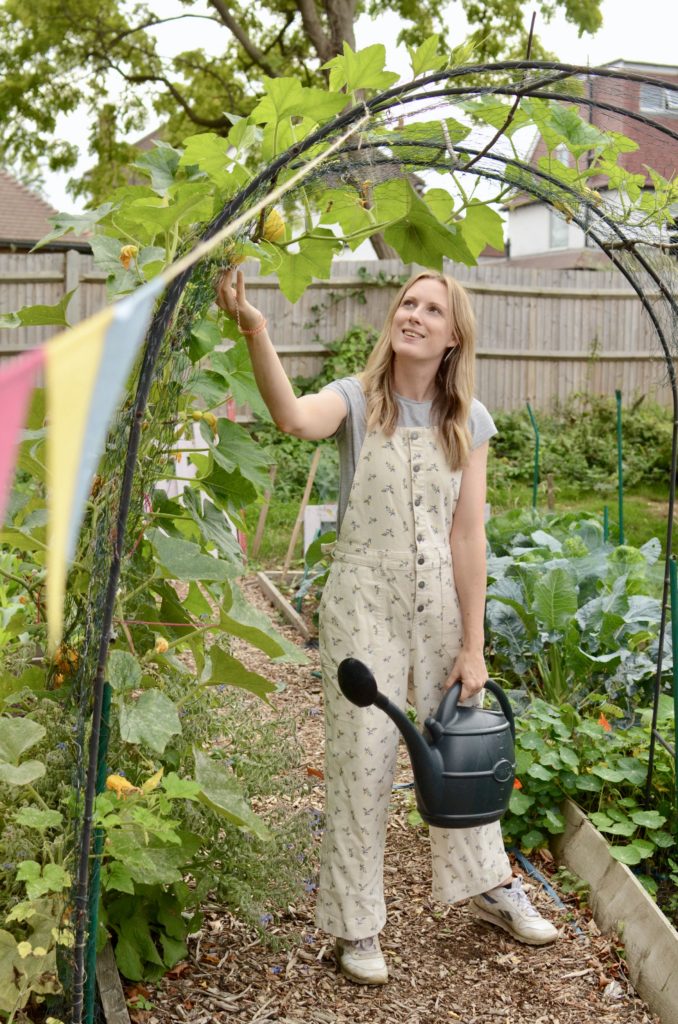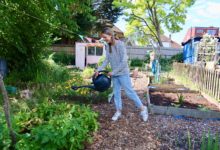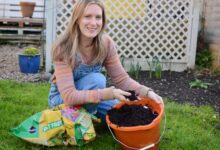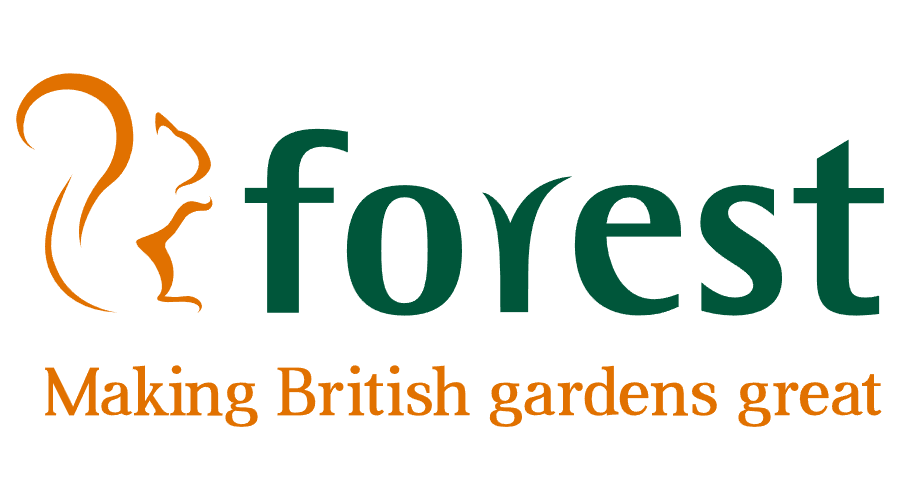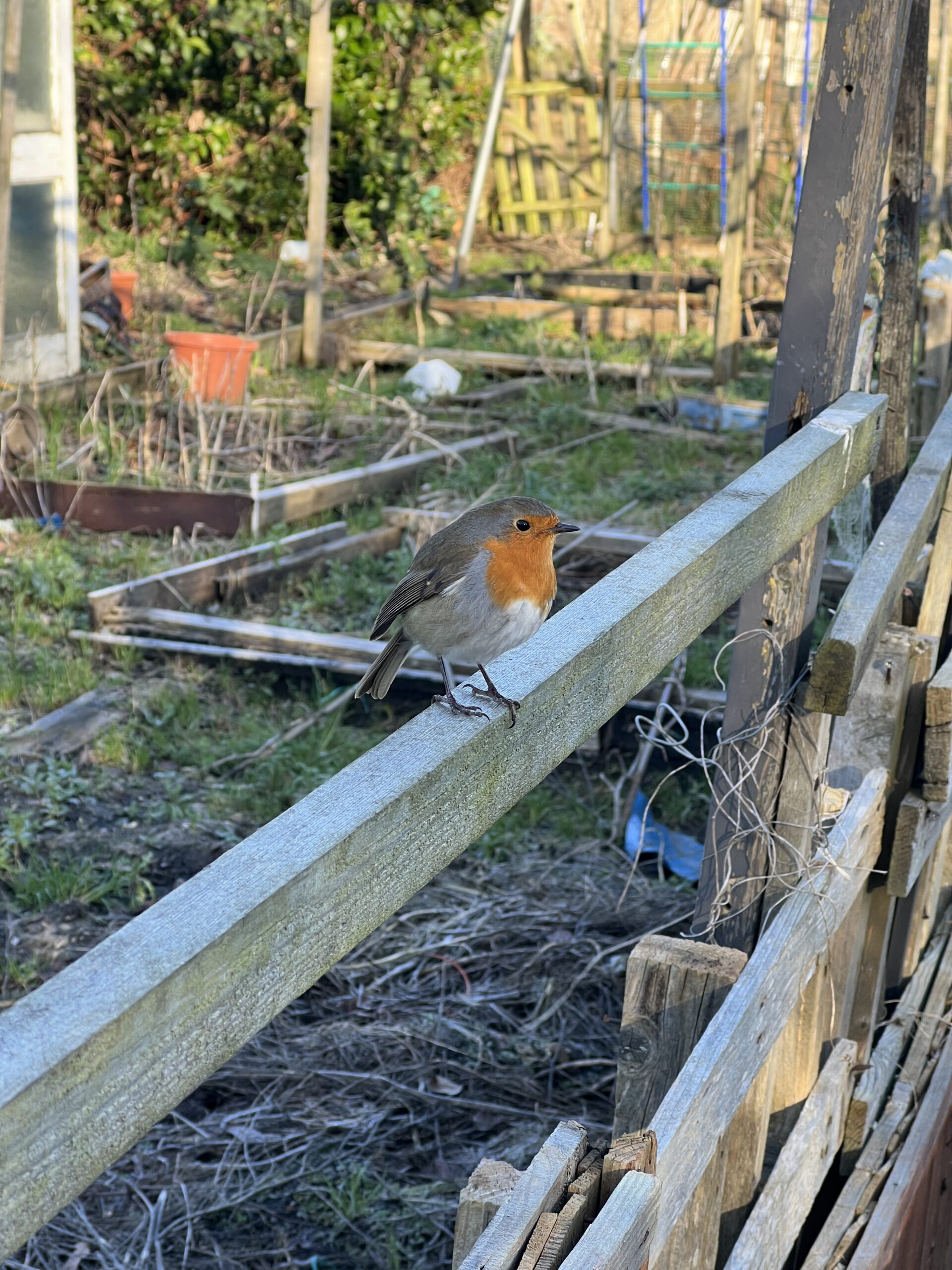
Winter can be a tough time for the wildlife. With diminishing food supplies, a lack of water source and a slowly disappearing habitat, they can really struggle to survive making it vital that we help the wildlife this winter. Luckily there are lots of things we can do as gardeners to help the wildlife this winter.
With so many people now paving over their gardens, trading in beautiful gardens for a place to park a car, lots of wildlife are struggling to find places to nestle down over the winter time. With crops finishing and flowers dying back, food supplies are also dwindling. And with less people prioritising ponds and bird baths in their gardens, the water supply can be in short supply too. All these things can have a huge negative impact on our wildlife.
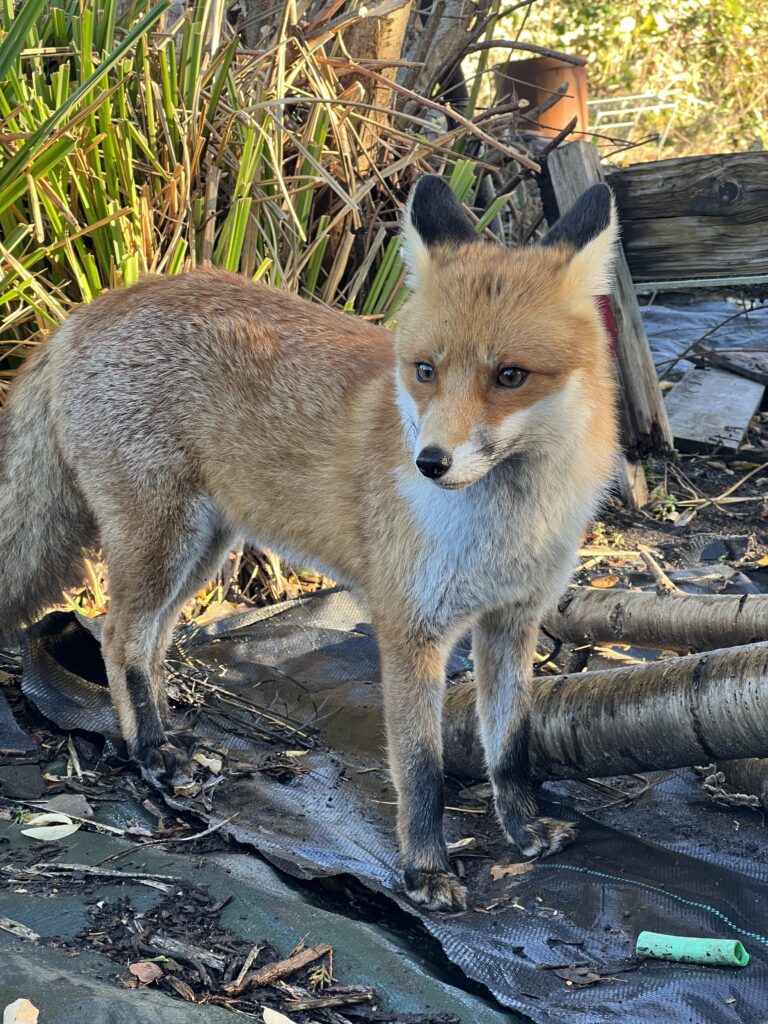
I do my best to cater for wildlife at my allotment plot throughout the year, but particularly in the winter. You might think that hinders my chances of successfully growing vegetables, but in fact it can do the opposite! The more you help the wildlife, the more they can help you, especially against the dreaded slugs and snail population which seems to be growing every year!
“Look after the wildlife and they will look after your crops!”
So how can we, as gardeners, help the wildlife this winter? Well, the simplest thing you can do, is absolutely nothing! That’s right, nothing. Don’t be so quick to cut your old finished crops and flowers back, stop mowing the lawn a little earlier in the Autumn and simply be less tidy in the garden. Sometimes, the worst thing we can do as gardeners is to keep things too neat. Wildlife loves the mess, it thrives in the tangle of old flower stems and flopped over finished crops. It loves the piles of leaves by the tree and the sudden growth of the grass to hide in.
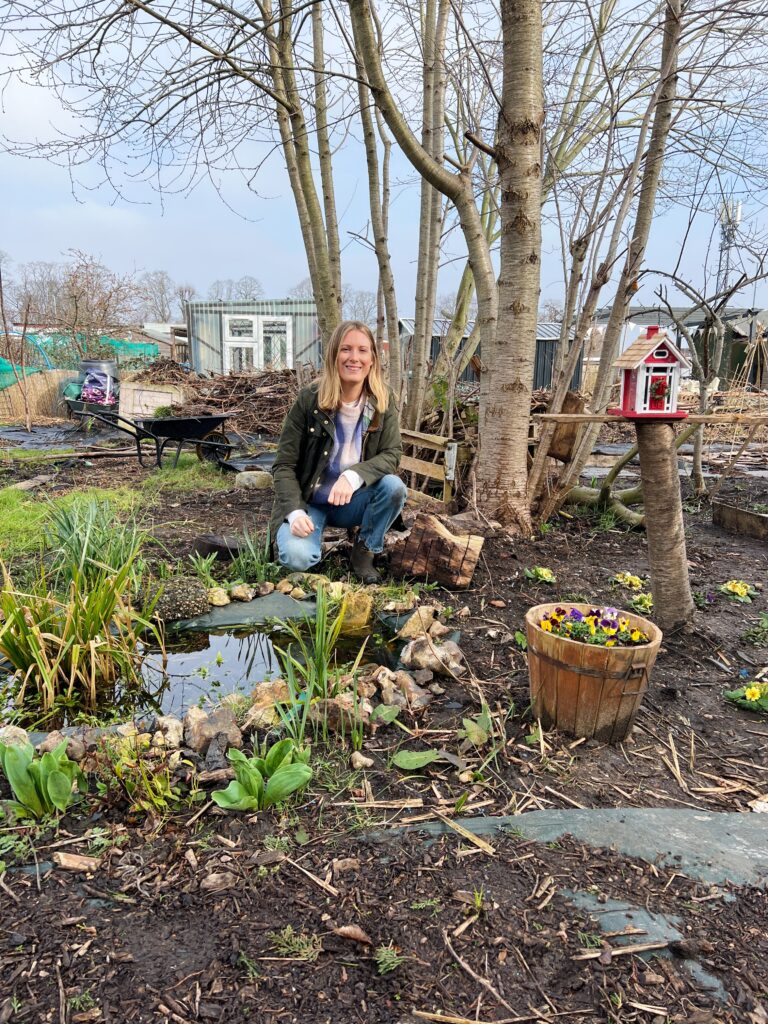
Here are a few more things I do to help wildlife this winter:
FEED THE BIRDS
Birds struggle a lot with finding regular food sources over the winter. This is the time when they really need extra fat on them so feed them as often and regularly as possible. Try to feed them in the same place so that they learn where the food is.
You can make natural bird feeders using apples or oranges, or use a regular bird feeder and keep topped up regularly. Birds can be a hinderance in the garden, but they can also be a big help by keeping the slug population down!
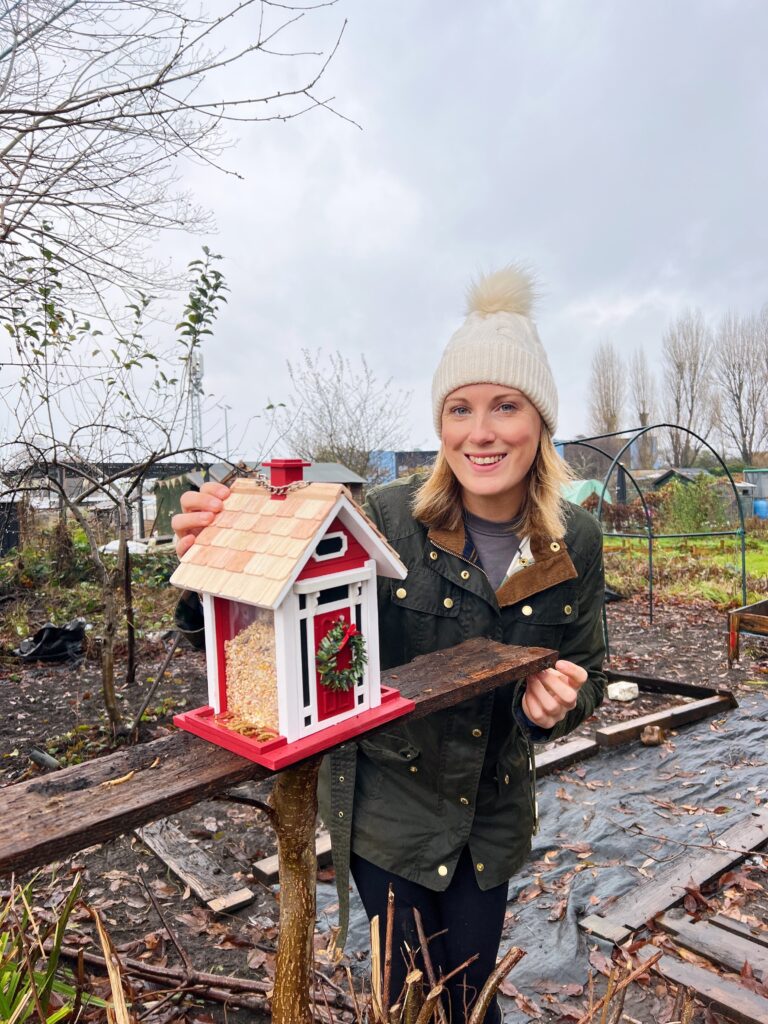
WATER SOURCES
A water source is so vital for a wildlife friendly winter garden. Water is often hard for wildlife to find over the winter, especially if it gets very cold and snows or puddles freeze over. I have a small wildlife pond on my allotment. If it does freeze over, I use hot water to gently melt the ice away. Try not to smash the ice with a hammer as it may harm creatures underneath.
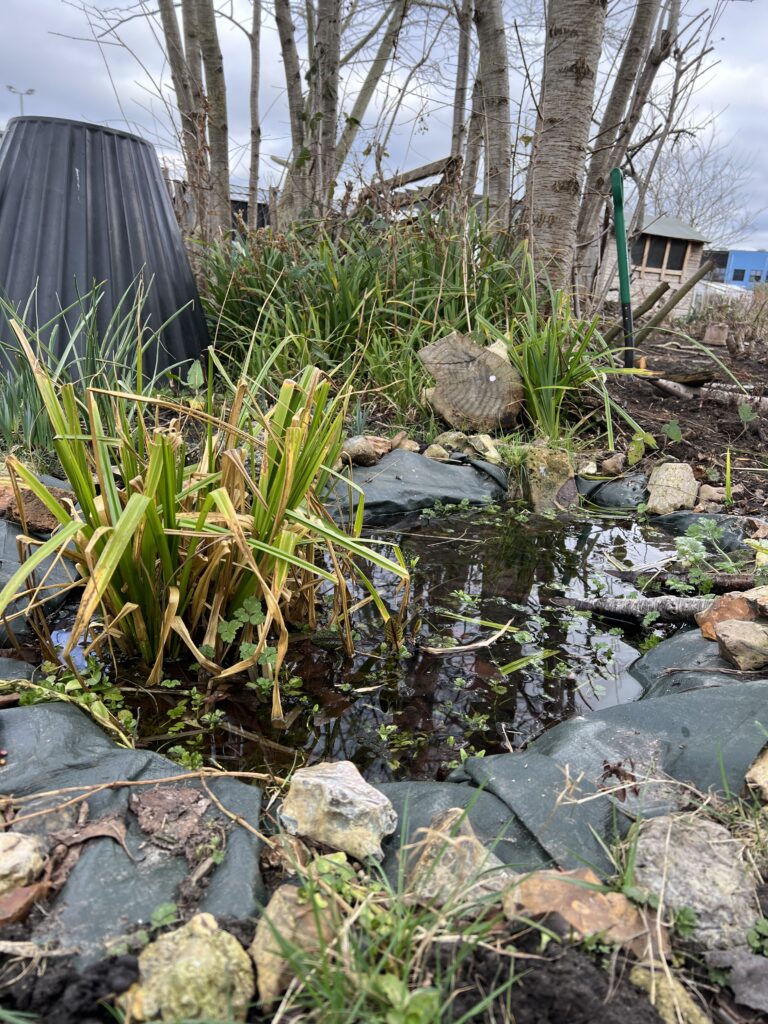
HABITATS
Making as many wildlife habitats as you can will be a huge help over the winter. It doesn’t have to be expensive or over the top crazy. Just a pile of logs or leaves, a rock pile or even a few old pallets piled up in the corner will be a great help.
I have a bug hotel and a hedgehog house at my allotment plot too!
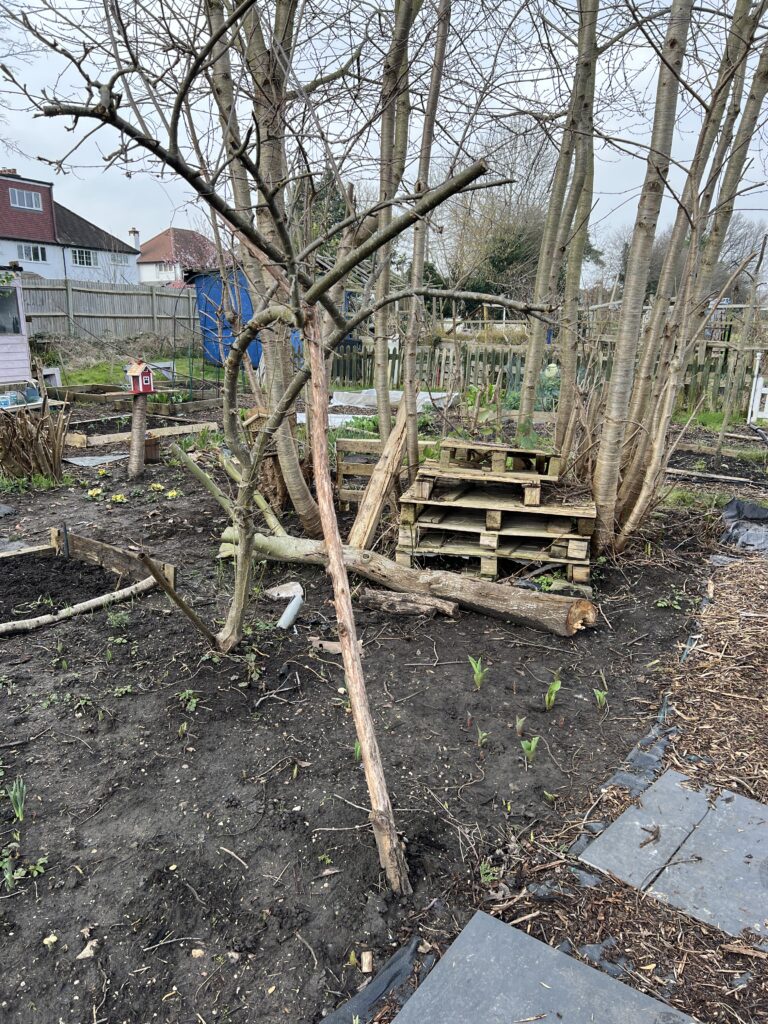
Of course, helping wildlife over winter really starts earlier in the year. Growing lots of flowers for pollinators, layering up beds with fresh compost to encourage the micro creatures, planting some trees and even digging out a pond can be a great foundation.
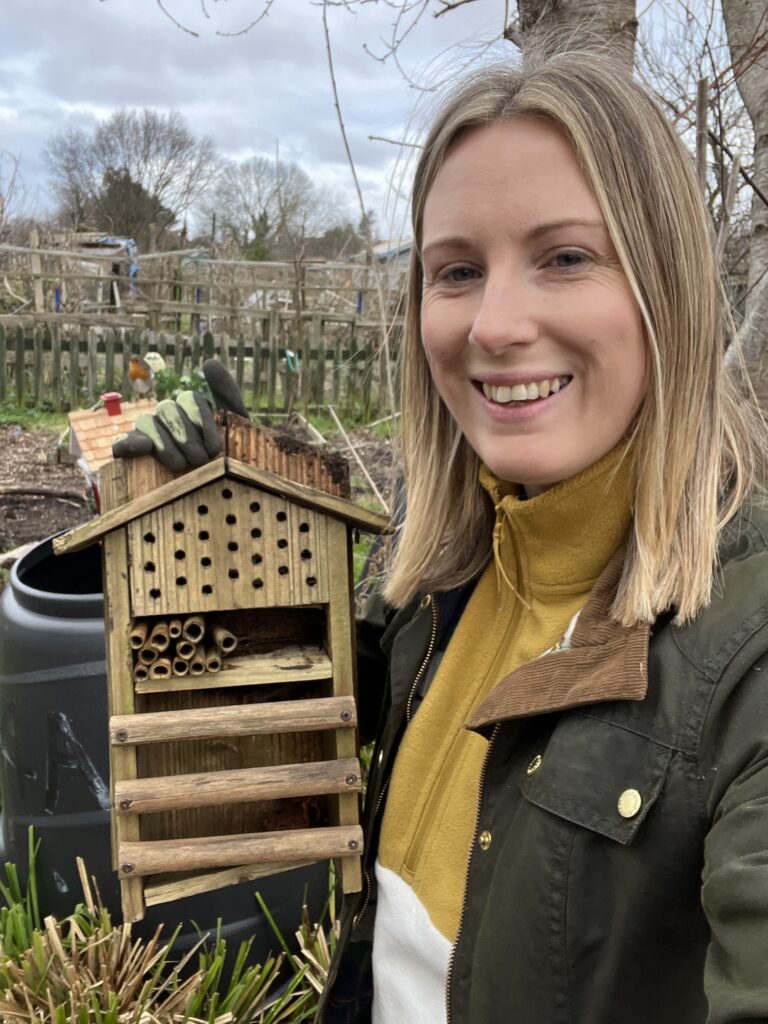
It’s also incredibly rewarding. With so many houses now prioritising parking spaces or simpler gardens with artificial grass or little planting, wildlife needs all the help it can get. So don’t be too tidy, leave out some food and water and make a few little habitats. You never know, you might make a few new furry friends in the process!


